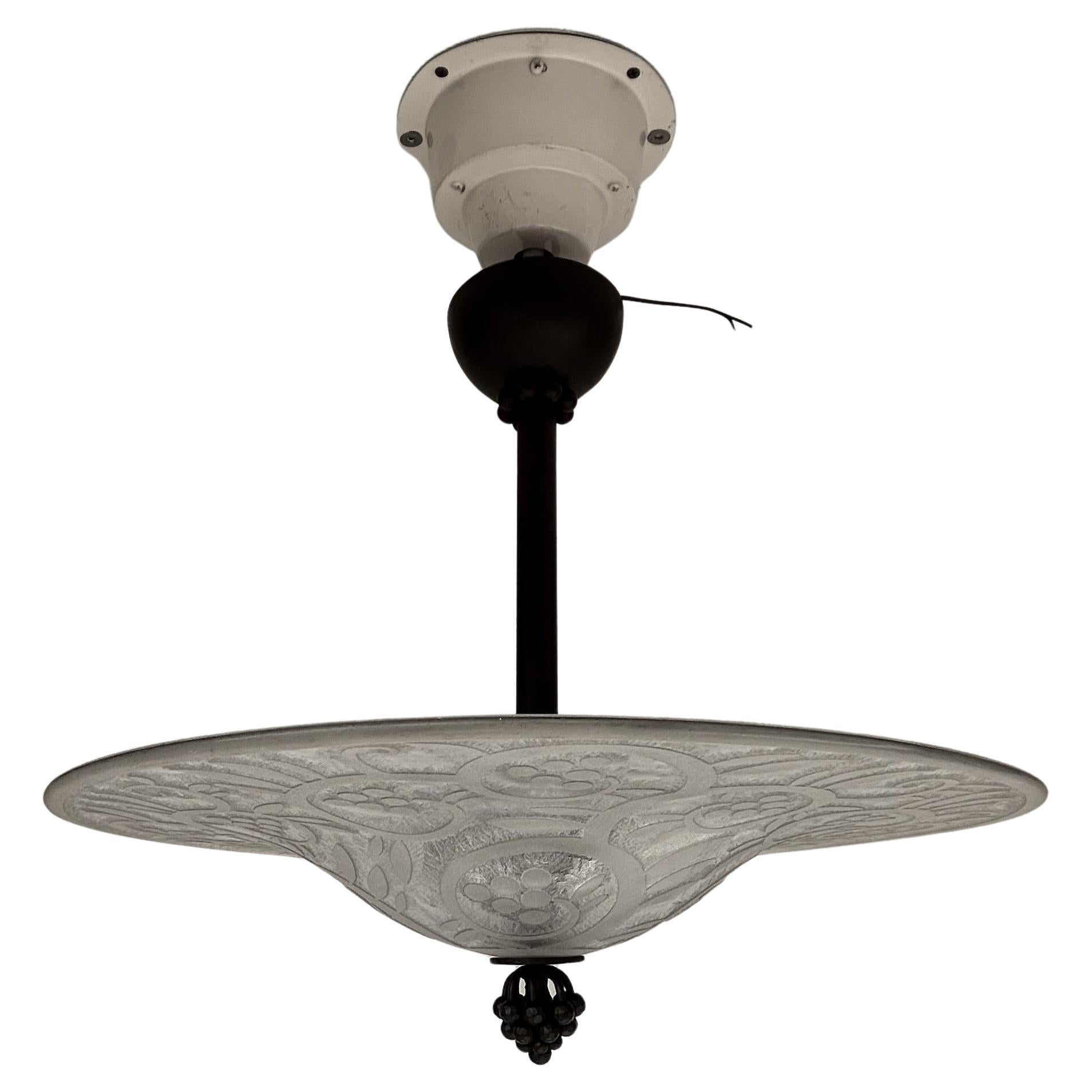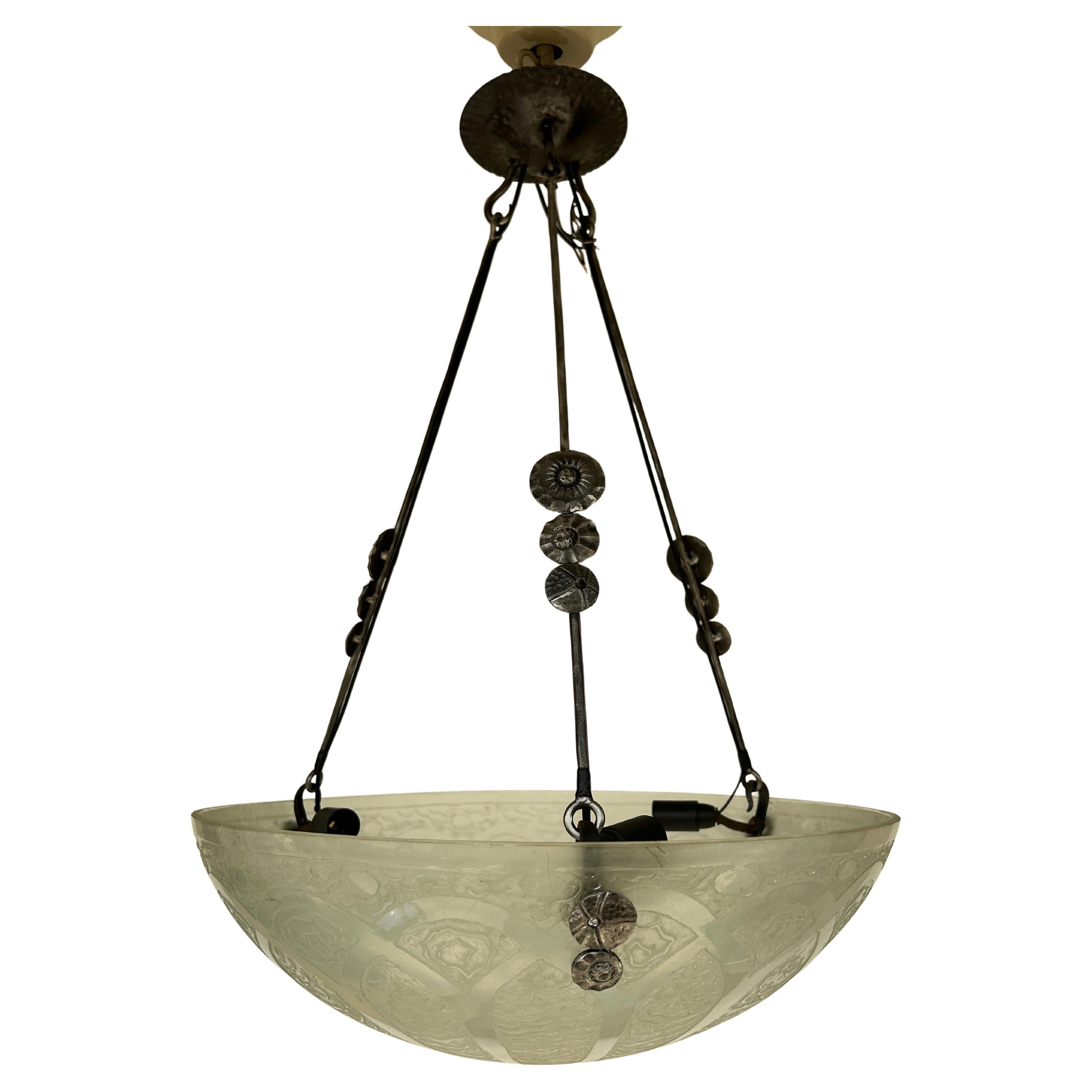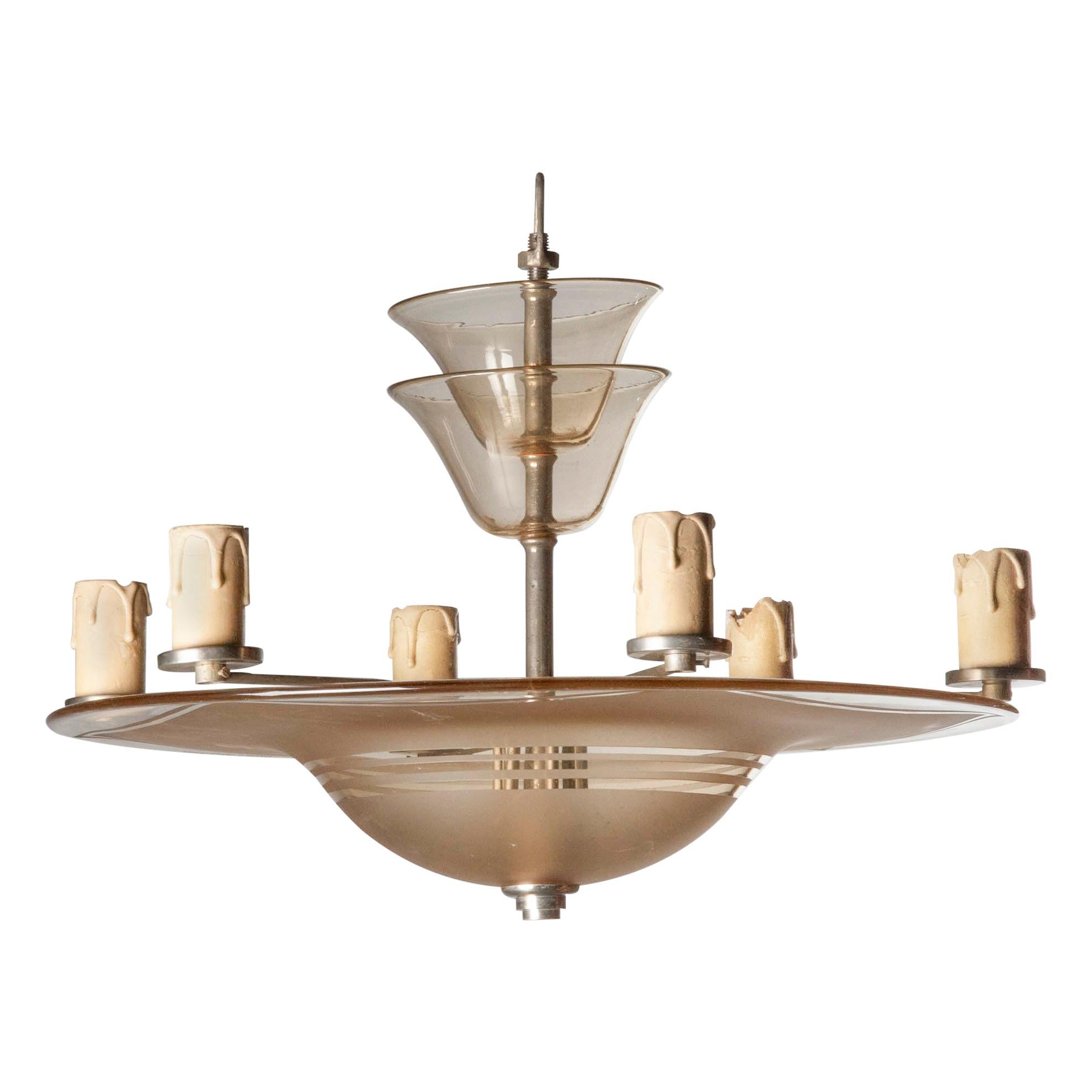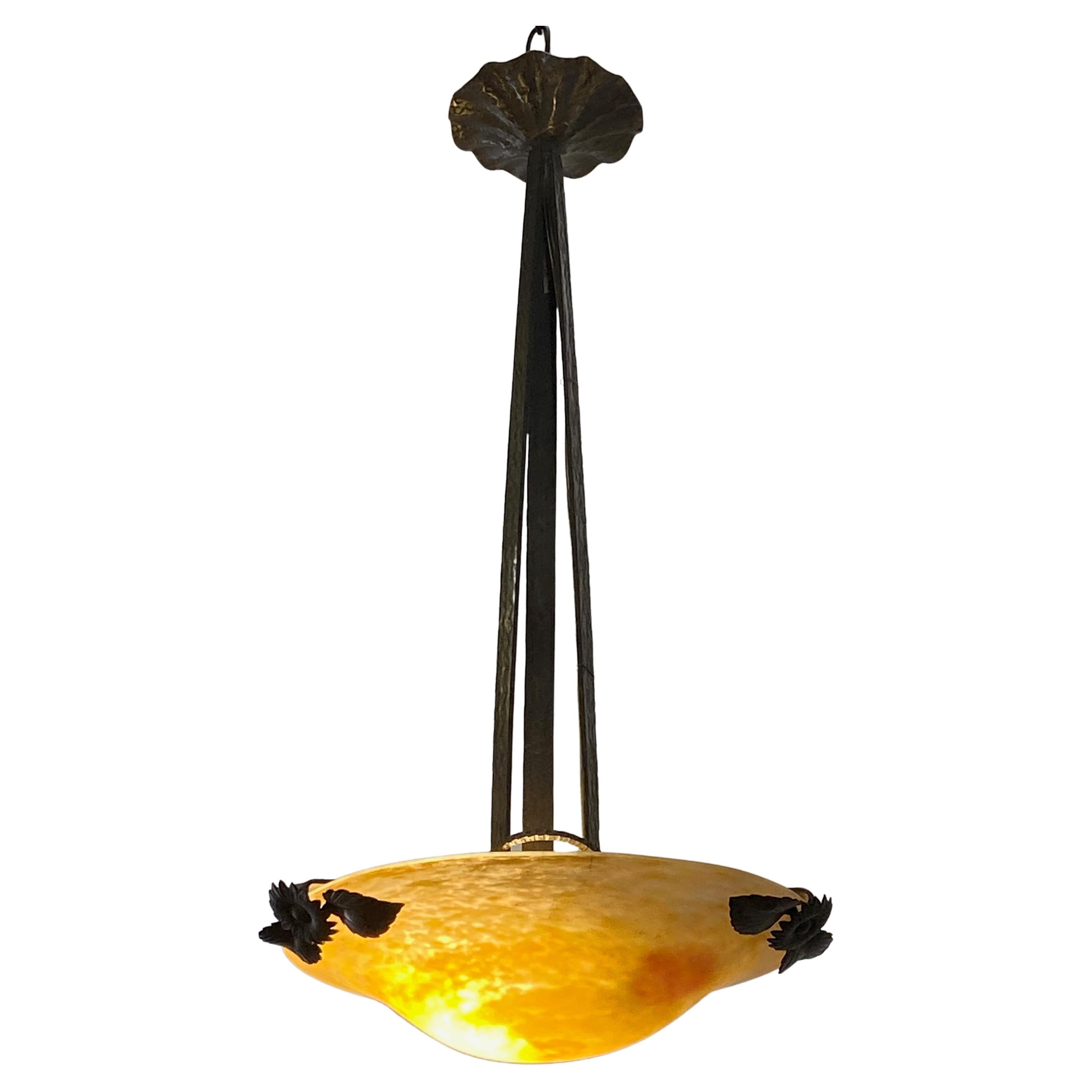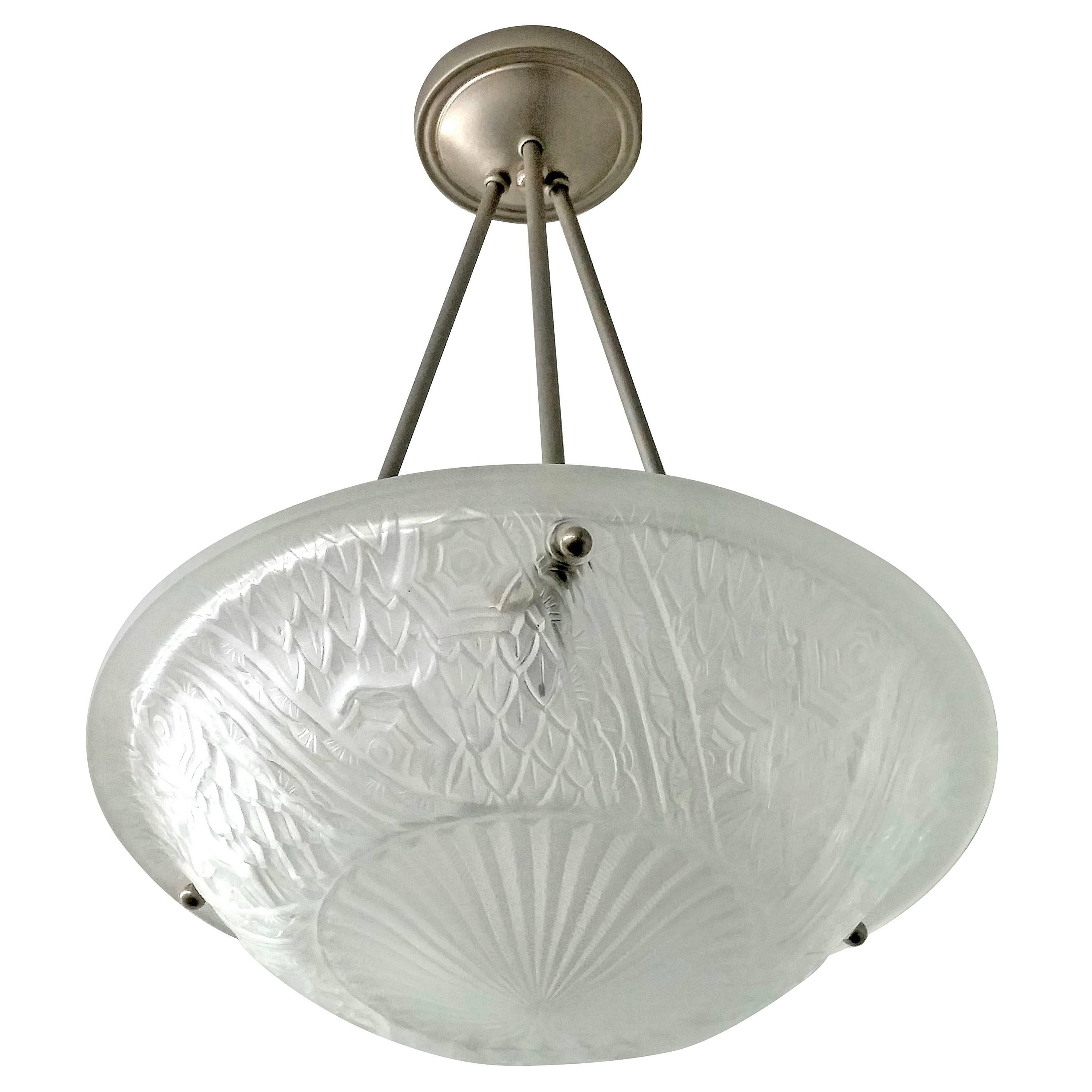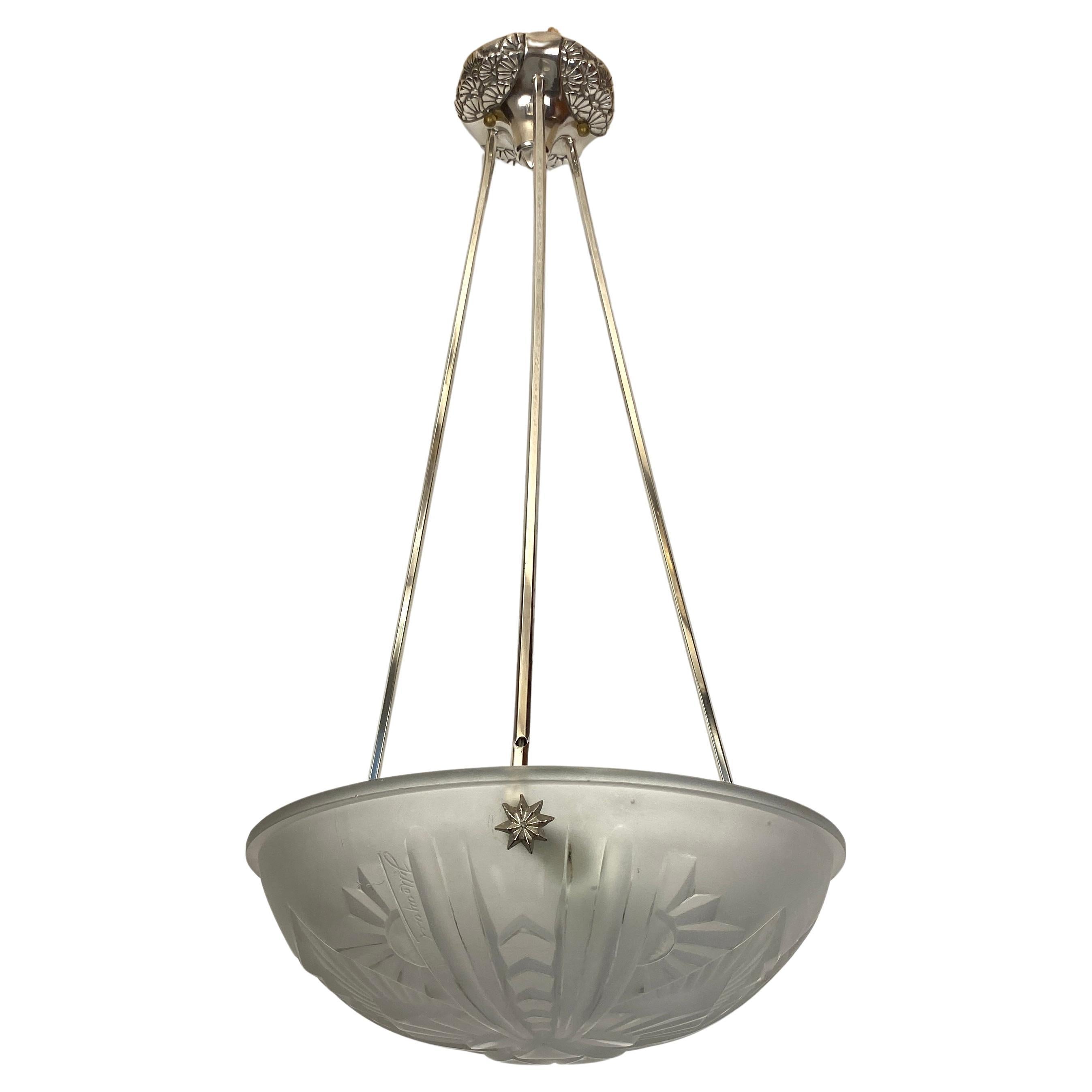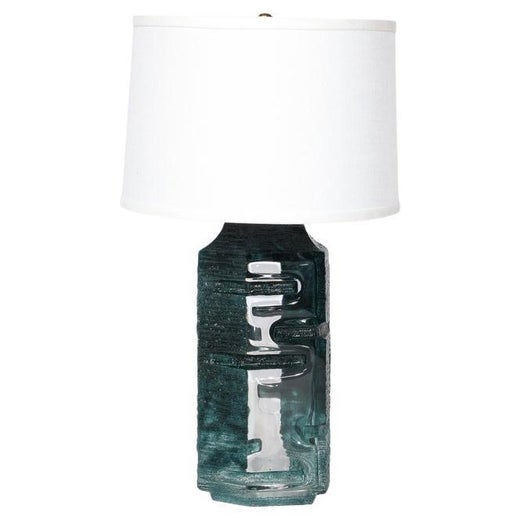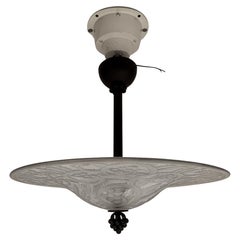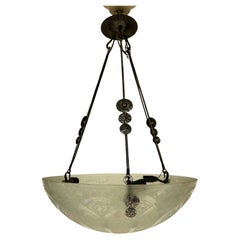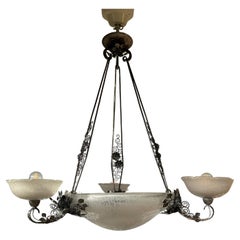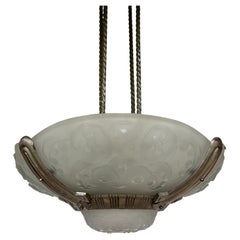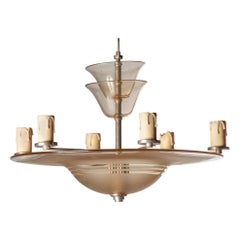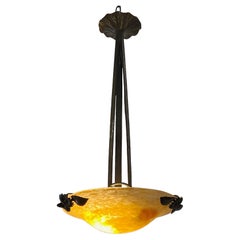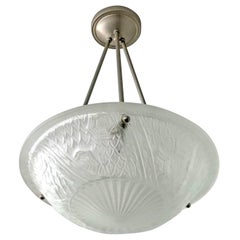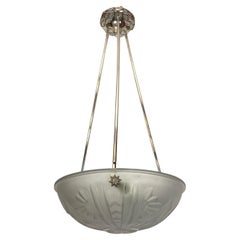Daum Nancy Art Deco Pendant Light
About the Item
- Creator:Daum (Manufacturer),Georges Capon (Maker)
- Dimensions:Height: 26.58 in (67.5 cm)Diameter: 20.48 in (52 cm)
- Power Source:Plug-in
- Voltage:110-150v,220-240v
- Lampshade:Included
- Style:Art Deco (Of the Period)
- Materials and Techniques:
- Place of Origin:
- Period:
- Date of Manufacture:1930
- Condition:
- Seller Location:NANTES, FR
- Reference Number:1stDibs: LU7403247185762
Daum
For collectors, Daum is a name in the first rank of the French makers of art glass, along with those of Émile Gallé and René Lalique. Led in its early decades by the brothers Auguste (1853–1909) and Antonin Daum (1864–1931), the company, based in the city of Nancy, established its reputation in the Art Nouveau period, and later successfully adopted the Art Deco style.
In 1878, lawyer Jean Daum took over the ownership of a glassworks as payment for a debt and installed his sons as proprietors. Initially, Daum made glass for everyday purposes such as windows, watches and tableware, but the success that Gallé enjoyed at the 1889 Universal Exposition in Paris — the international showcase for which the Eiffel Tower was built — inspired the Daum brothers to begin making art-glass pieces. They produced popular works of cameo glass, a decorative technique in which an outer layer of glass is acid-etched or carved off to reveal the layer below, but Daum became best known for vessels and sculptures in pâte de verre — a painstaking method in which finely ground colored glass is mixed with a binder, placed in a mold and then fired in a kiln.
Though early Daum glass was never signed by individual artists, the firm employed some of the masters of the naturalistic, asymmetrical Art Nouveau style, including Jacques Grüber, Henri Bergé and Amalric Walter (whose first name is frequently misspelled). Daum also collaborated with furniture and metalware designer Louis Majorelle, who created wrought-iron and brass mounts for vases and table lamps. In the 1960s, Daum commissioned fine artists, most notably Salvador Dalí and sculptor César Baldaccini, to design glass pieces. As you see from the works offered on 1stDibs, Daum has been home to an astonishingly rich roster of creative spirits and is today a state-owned enterprise making pâte de verre figurines.
- ShippingRetrieving quote...Shipping from: NANTES, France
- Return Policy
More From This Seller
View AllMid-20th Century French Art Deco Chandeliers and Pendants
Wrought Iron
Mid-20th Century French Art Deco Chandeliers and Pendants
Wrought Iron
Vintage 1920s French Art Deco Chandeliers and Pendants
Wrought Iron
Mid-20th Century French Art Deco Chandeliers and Pendants
Bronze
Vintage 1920s French Art Deco Chandeliers and Pendants
Wrought Iron
Vintage 1920s French Art Deco Chandeliers and Pendants
Wrought Iron
You May Also Like
Antique Mid-19th Century French Art Deco Chandeliers and Pendants
Iron
Early 20th Century French Art Deco Chandeliers and Pendants
Wrought Iron
Mid-20th Century French Art Deco Chandeliers and Pendants
Glass
Early 20th Century French Art Deco Chandeliers and Pendants
Bronze, Nickel
Early 20th Century French Art Deco Chandeliers and Pendants
Glass
Vintage 1920s French Art Deco Chandeliers and Pendants
Brass
